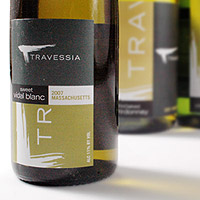This made my head spin, thus I am reprinting the entire thing:
May 12, 2009
Op-Ed Contributor
Is My Marriage Gay?By JENNIFER FINNEY BOYLAN
AS many Americans know, last week Gov. John Baldacci of Maine signed a law that made this state the fifth in the nation to legalize gay marriage. It’s worth pointing out, however, that there were some legal same-sex marriages in Maine already, just as there probably are in all 50 states. These are marriages in which at least one member of the couple has changed genders since the wedding.
I’m in such a marriage myself and, quite frankly, my spouse and I forget most of the time that there is anything particularly unique about our family, even if we are — what is the phrase? — “differently married.”
Deirdre Finney and I were wed in 1988 at the National Cathedral in Washington. In 2000, I started the long and complex process of changing from male to female. Deedie stood by me, deciding that her life was better with me than without me. Maybe she was crazy for doing so; lots of people have generously offered her this unsolicited opinion over the years. But what she would tell you, were you to ask, is that the things that she loved in me have mostly remained the same, and that our marriage, in the end, is about a lot more than what genders we are, or were.
Deirdre is far from the only spouse to find herself in this situation; each week we hear from wives and husbands going through similar experiences together. Reliable statistics on transgendered people always prove elusive, but just judging from my e-mail, it seems as if there are a whole lot more transsexuals — and people who love them — in New England than say, Republicans. Or Yankees fans.
I’ve been legally female since 2002, although the definition of what makes someone “legally” male or female is part of what makes this issue so unwieldy. How do we define legal gender? By chromosomes? By genitalia? By spirit? By whether one asks directions when lost?
We accept as a basic truth the idea that everyone has the right to marry somebody. Just as fundamental is the belief that no couple should be divorced against their will.
For our part, Deirdre and I remain legally married, even though we’re both legally female. If we had divorced last month, before Governor Baldacci’s signature, I would have been allowed on the following day to marry a man only. There are states, however, that do not recognize sex changes. If I were to attempt to remarry in Ohio, for instance, I would be allowed to wed a woman only.
Gender involves a lot of gray area. And efforts to legislate a binary truth upon the wide spectrum of gender have proven only how elusive sexual identity can be.
The case of J’noel Gardiner, in Kansas, provides a telling example. Ms. Gardiner, a postoperative transsexual woman, married her husband, Marshall Gardiner, in 1998. When he died in 1999, she was denied her half of his $2.5 million estate by the Kansas Supreme Court on the ground that her marriage was invalid. Thus in Kansas, any transgendered person who is anatomically female is now allowed to marry only another woman.
Similar rulings have left couples in similar situations in Florida, Ohio and Texas. A 1999 ruling in San Antonio, in Littleton v. Prange, determined that marriage could be only between people with different chromosomes. The result, of course, was that lesbian couples in that jurisdiction were then allowed to wed as long as one member of the couple had a Y chromosome, which is the case with both transgendered male-to-females and people born with conditions like androgen insensitivity syndrome. This ruling made Texas, paradoxically, one of the first states in which gay marriage was legal.
A lawyer for the transgendered plaintiff in the Littleton case noted the absurdity of the country’s gender laws as they pertain to marriage:
“Taking this situation to its logical conclusion, Mrs. Littleton, while in San Antonio, Tex., is a male and has a void marriage; as she travels to Houston, Tex., and enters federal property, she is female and a widow; upon traveling to Kentucky she is female and a widow; but, upon entering Ohio, she is once again male and prohibited from marriage; entering Connecticut, she is again female and may marry; if her travel takes her north to Vermont, she is male and may marry a female; if instead she travels south to New Jersey, she may marry a male.”
Legal scholars can (and have) devoted themselves to the ultimately frustrating task of defining “male” and “female” as entities fixed and unmoving. A better use of their time, however, might be to focus on accepting the elusiveness of gender — and to celebrate it. Whether a marriage like mine is a same-sex marriage or some other kind is hardly the point. What matters is that my spouse and I love each other, and that our legal union has been a good thing — for us, for our children and for our community.
It’s my hope that people who are reluctant to embrace same-sex marriage will see that it has been with us, albeit in this one unusual circumstance, for years. Can we have a future in which we are more concerned with the love a family has than with the sometimes unanswerable questions of gender and identity? As of last week, it no longer seems so unthinkable.
As we say in Maine, you can get there from here.
Jennifer Finney Boylan is a professor of English at Colby College and the author of the memoir “I’m Looking Through You: Growing Up Haunted.” http://www.nytimes.com/2009/05/12/opinion/12boylan.html?th&emc=th











